Panel #1: Fog Computing and Networking – What’s Next?
17:00-18:30 | Room: TBD
Moderator:
 |
Doug Zuckerman IEEE Communications Society President Emeritus |
An active volunteer for more than 30 years, Doug Zuckerman is a past IEEE Division III (Communications Technology) Director, was 2008-2009 President of the IEEE Communications Society, and previously held leadership positions in conferences, publications and membership development. He received his B.S., M.S. and Eng.Sc.D degrees from Columbia University, USA, and is an IEEE Life Fellow. His professional experience, mainly at Bell Labs and Telcordia Technologies, USA, spans the operations, management and engineering of emerging communications technologies, networks and applications. His work heavily influenced early standards for management of telecommunications networks. Presently semi-retired, he is still active in standards as a representative to the OpenFog Consortium where as a board member. He is also a consulting employee for Vencore Labs. He currently serves on the IEEE Communications Society’s Board of Governors and the IEEE Future Directions Committee.
Panelists:
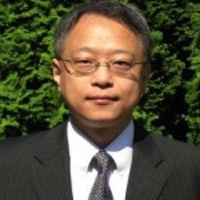 |
Tao Zhang IEEE Fellow, Distinguished Engineer Senior Director, Corporate Strategy Group, Cisco Systems |
He joined Cisco in 2012 as Chief Scientist for Cisco’s Smart Connected Vehicles business. Since then, he has also been leading initiatives to develop strategies, technology, and eco-systems for the Internet of Things (IoT) and Fog Computing. He is a co-founder and Board Director of OpenFog Consortium, the CIO and a Board Governor of IEEE Communications Society, and a co-founder and founding Board Director of the Connected Vehicle Trade Association (CVTA). Prior to joining Cisco, Dr. Zhang was Chief Scientist and Director of Wireless and Vehicular Networking at Telcordia Technologies (formerly Bell Communications Research or Bellcore). For over 25 years, Tao has been in various technical and executive positions, directing research and product development in vehicular, mobile, and broadband networking.
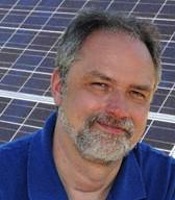 |
Bruce McMillin Professor of Computer Science, Associate Dean of Engineering and Computing, Director of the Center for Information Assurance and Co-Director of the Center for Smart Living at the Missouri University of Science and Technology |
He leads and participates in interdisciplinary teams in formal methods for fault tolerance and security in distributed embedded systems with an eye towards critical infrastructure protection. His current work focuses on protection for advanced power grid control. His research has been supported by the United States NSF, AFOSR, DOE, NIST and several Missouri Industries.
Dr. McMillin has authored over 100 refereed papers in international conferences and journals. He is leading the distributed grid intelligence project of the Future Renewables NSF Engineering Research Center, an advanced smart grid architecture. He is a senior member of the IEEE and member of the IFIP WG 11.0 on Critical Infrastructure Protection, and member and contributor to the SEPA (Smart Electric Power Alliance). He currently serves in the IEEE Computer Society’s Board of Governors and is a member of the Computing ABET Accreditation Commission.
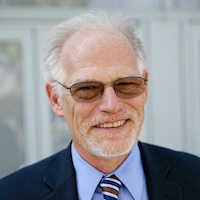 |
Tom Coughlin President, Coughlin Associates |
A widely respected digital storage analyst as well as business and technology consultant, Dr. Coughlin has over 35 years in the data storage industry with engineering and management positions at high profile companies.
Dr. Coughlin, an IEEE Fellow, has many publications and six patents to his credit. Tom is also the author of Digital Storage in Consumer Electronics: The Essential Guide, which was published by a division of Elsevier Press. Coughlin Associates provides market and technology analysis as well as Data Storage Technical and Business Consulting services. Tom publishes the Digital Storage Technology Newsletter, the Media and Entertainment Storage Report, the Emerging Non-Volatile Memory Report and other industry reports. Tom is also a regular contributor on digital storage for Forbes.com and other blogs.
Tom is active with SMPTE (Journal article writer and Conference Program Committee), SNIA (including a founder of the SNIA SSSI), the IEEE (he is Chair of the IEEE Public Visibility Committee, Past Director for IEEE Region 6 and active in the Consumer Electronics Society) and other professional organizations. Tom is the founder and organizer of the Annual Storage Visions Conference (www.storagevisions.com as well as the Creative Storage Conference (www.creativestorage.org). He has been the general chairman of the annual Flash Memory Summit. He is a Senior member of the IEEE and a member of the Consultants Network of Silicon Valley (CNSV). For more information on Tom Coughlin and his publications go to www.tomcoughlin.com.
Abstract:
Clouds alone are becoming increasingly inadequate for supporting the emerging systems and applications, such as Internet of Things (IoT), 5G wireless systems, Big Data, edge analytics, and embedded Artificial Intelligence (AI). Fog computing and networking – or fog – has emerged to fill the gaps by bringing computing, networking, management, and control functions anywhere along the cloud-to-things continuum where these functions can best meet users’ requirements. The immersive fogs can address many challenges that clouds cannot effectively address, such as enabling realtime edge analytics and local control, connecting and protecting the vast spectrum of resource-constrained devices, and overcoming network bandwidth and availability constraints.
As fog will extend from the clouds all the way to the end users, it will have a profound impact on consumer communications. Wireless gateways in homes would become fog nodes that will serve not just as a networking gateway but also as a local computing and data storage server. A fog node embedded on a vehicle can make the vehicle a seamless part of the end-to-end services provided by the fog and the clouds to, for example, help update the software on the many microcomputers on the car and to allow the user to reconfigure the applications and user interface in the car. When someone gets in her car, her smartphone can become a fog node to provide services to her car. Consumer drones will rely on fog nodes on the ground and on other drones to help guide his flight regulate drone traffic, and ensure drones’ safety and security.
This new fog paradigm imposes both new opportunities and research challenges, calls for fundamental rethinking of computing and networking architectures, and can disrupt existing business models and reshape industry landscapes.
The industries, from chipmakers to networking companies to software companies to application developers to IoT vertical technology providers and users, are devoting significant efforts to develop fog technologies. The OpenFog Consortium (OpenFog), consisting of industry movers and leading academic institutions are developing an open fog reference architecture and building a global ecosystem to accelerate market adoption of fog. The many profound research challenges in fog computing and networking are also drawing a booming interest in the academia. A growing number of universities and R&D organizations have launched fog-related initiatives. We have witnessed a breath of new workshops, panels, and journal special issues on fog computing and networking have over the past couple of years. Government agencies around the world are initiating new R&D programs on fog.
On this plenary panel, industry and academia experts from different regions of the world will discuss their visions on the road ahead on fog computing and networking, focusing on challenges in fulfilling the full potential of fog computing and networking.
Panel #2: "Immersive Future" with New and Emerging Innovations and Predictions
A Mini-Technology Time Machine Panel Session
17:30-19:00 | Room: TBD
Moderator:
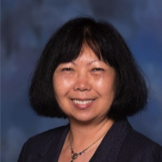 |
Kathy Grise Senior Program Director, IEEE Future Directions |
Kathy supports new technology initiatives, and is the IEEE staff program director for the Big Data Initiative, Smart Materials Initiative, the IEEE Technology Navigator, Future Directions and Industry Advisory Board Committees, manages the digital presence team for Future Directions, and serves as the Technical Program Chair of COMPSAC 2018 Symposium - Data Sciences, Analytics, & Technologies (DSAT).
Prior to joining the IEEE staff, Ms. Grise held numerous positions at IBM, and most recently was a Senior Engineering Manager for Process Design Kit Enablement in the IBM Semiconductor Research and Development Center. Ms. Grise led the overall IT infrastructure implementation, and software development in support of semiconductor device modeling verification, packaging, and delivery, device measurement and characterization data collection and management, and automation for device modeling engineers. Ms. Grise is a graduate of Washington and Jefferson College, and an IEEE Senior member.
Check out ieee.org/futuredirections, bigdata.ieee.org, and TTM.ieee.org.
Panelists:
 |
Tom Coughlin President, Coughlin Associates |
A widely respected digital storage analyst as well as business and technology consultant, Dr. Coughlin has over 35 years in the data storage industry with engineering and management positions at high profile companies.
Dr. Coughlin has many publications and six patents to his credit. Tom is also the author of Digital Storage in Consumer Electronics: The Essential Guide, which was published by a division of Elsevier Press. Coughlin Associates provides market and technology analysis as well as Data Storage Technical and Business Consulting services. Tom publishes the Digital Storage Technology Newsletter, the Media and Entertainment Storage Report, the Emerging Non-Volatile Memory Report and other industry reports. Tom is also a regular contributor on digital storage for Forbes.com and other blogs.
Tom is active with SMPTE (Journal article writer and Conference Program Committee), SNIA (including a founder of the SNIA SSSI), the IEEE (he is Chair of the IEEE Public Visibility Committee, Past Director for IEEE Region 6 and active in the Consumer Electronics Society) and other professional organizations. Tom is the founder and organizer of the Annual Storage Visions Conference (www.storagevisions.com as well as the Creative Storage Conference (www.creativestorage.org). He has been the general chairman of the annual Flash Memory Summit. He is a Senior member of the IEEE and a member of the Consultants Network of Silicon Valley (CNSV). For more information on Tom Coughlin and his publications go to www.tomcoughlin.com.
 |
Nicholas Napp Co-Founder, Xmark Labs, LLC |
Nicholas Napp has been working with VR and AR systems since the early 1990s. His team at Rainbow Studios pioneered the use of VR in 3D animation production.
Nicholas has brought over 40 products to market across a wide range of consumer and enterprise markets. He is a systems thinker with broad skills in business development; product development; innovation & technology; and strategic marketing and partnerships. He is particularly focused on the integration of strategy, technology and corporate narrative to accelerate business growth.
His prior roles include leading multiple startups; Lead External Technology Scout, North America for Sony Ericsson; and Vice-President, Animation, Rainbow Studios (sold to THQ, inc.). He is also Chairman of the Board at FabNewport, a non-profit makerspace for middle school and older students.
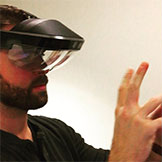 |
Conor Russomanno Director of Advanced Interfaces, Meta |
Conor Russomanno is the Director of Advanced Interfaces at Meta, one of the pioneering companies in Augmented Reality (AR). Conor is also the co-founder and CEO of OpenBCI, a company dedicated to open-source innovation of brain-computer interface (BCI) technologies. Conor studied Civil Engineering and Engineering Mechanics at Columbia University and then went on to study Design and Technology at Parsons School of Design. After completing grad school, Conor taught graduate level courses in Creative Coding, Physical Computing, Philosophy of the Mind, and Human-Computer Interaction at Parsons School of Design's MFA Design & Technology (MFADT) program, as well as New York University's Interactive Telecommunications Program (ITP). Conor's current career interests lie at the intersection of Augmented Reality, Brain-Computer Interfacing, and Artificial Intelligence.
 |
Tao Zhang IEEE Fellow, Distinguished Engineer Senior Director, Corporate Strategy Group, Cisco Systems |
He joined Cisco in 2012 as Chief Scientist for Cisco’s Smart Connected Vehicles business. Since then, he has also been leading initiatives to develop strategies, technology, and eco-systems for the Internet of Things (IoT) and Fog Computing. He is a co-founder and Board Director of OpenFog Consortium, the CIO and a Board Governor of IEEE Communications Society, and a co-founder and founding Board Director of the Connected Vehicle Trade Association (CVTA). Prior to joining Cisco, Dr. Zhang was Chief Scientist and Director of Wireless and Vehicular Networking at Telcordia Technologies (formerly Bell Communications Research or Bellcore). For over 25 years, Tao has been in various technical and executive positions, directing research and product development in vehicular, mobile, and broadband networking.
Abstract:
Predicting and immersing one with the future is always a challenge and a desire. The IEEE rises to that challenge based upon the work it does on multiple new and emerging technologies through serving as a catalyst for developing new innovations, products and services. IEEE Future Directions serves as an incubator for these new initiatives. These include, but not limited to:
- The Big Data Initiative (BDI), bigdata.ieee.org.
- The Brain Initiative (BI), brain.ieee.org
- The Digital Senses Initiative, digitalsenses.ieee.org
- Fog Computing and Networking
The session hopes to demonstrate the interplay and intersections among Big Data, Brain, Digital Senses, and Fog Computing. Emphasis will be upon presenting practical applications and its implementations. Invited subject matter expert speakers will comment on current and past implementations, with a focus on predictions of the future and potential implications to the consumer. In particular on aspects of AR, VR, and Mixed Reality.
This session will provide a “mini-Technology Time Machine” preview of the future on Big Data, Brain, Digital Senses, and Fog Computing technologies.
A panel of industry experts from the fields of Big Data, Brain, Digital Senses, and Fog Computing will each provide their perspectives, observations, and predictions of the future. The focus will be on new developments as it relates to the consumer. This will be followed with the opportunity for comments and questions.


